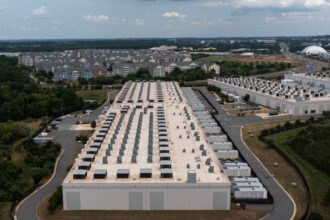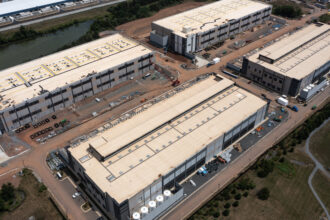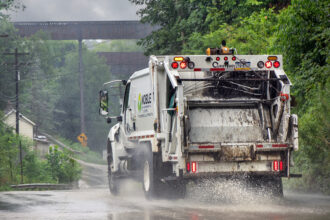At the eastern edge of America’s “breadbasket” region, Michigan’s Saline Township is a quintessential agricultural community. The township is home to 2,200 residents, several family-owned farms and a small historic district—and a hyperscale data center will soon join the list.
The Saline Township Board voted earlier this month to settle a lawsuit in which development firm Related Digital and the landowners of the proposed construction site accused the township of exclusionary zoning, or of unfairly limiting what property owners can do and build on their land. This lawsuit, filed Sept. 12, came just two days after the board voted 4–1 against rezoning the site’s 575 acres of farmland for the company’s data center project.
A county judge certified the settlement last week, bringing a sudden end to the dispute amid intense opposition from Saline Township residents and elected officials, who expressed concern at public meetings regarding traffic, noise, and water and energy resources.
“We’re a farming rural township, and that’s what we want to stay,” said James Marion, supervisor of the Township Board.
Alongside the rest of the board, Marion attended several public meetings about the data center and lawsuit, and says most of the township is opposed to the project. However, much of the board ultimately bowed to the legal pressure from Related Digital.
“I still voted against it,” Marion said. “I said, ‘Well, if we lose in court, we’ll cross that bridge when we come to it.’”
Marion’s vote against the settlement ended up standing alone. This month, after a two-hour closed-door meeting, the township’s board voted 4–1 to settle, avoiding a lawsuit that Marion said the township’s attorneys painted as difficult to win. The settlement includes provisions to restore the land if the data center goes unused, preserve existing wild spaces, and invest several million dollars in the community annually.
“We are pleased by the Board’s vote and that we were able to reach a resolution that allows this important project to move forward in a responsible way,” Natalie Ravitz, Related Digital’s executive vice president of corporate communications, said in a statement.
While the developer won out in Saline Township, versions of this fight are playing out across the country. There are currently 4,080 data centers in the United States, up over 30 percent from 3,059 in December 2023. As artificial intelligence continues to drive the data center industry’s growth, many of the companies behind these developments are choosing to build in rural areas where land is cheaper.
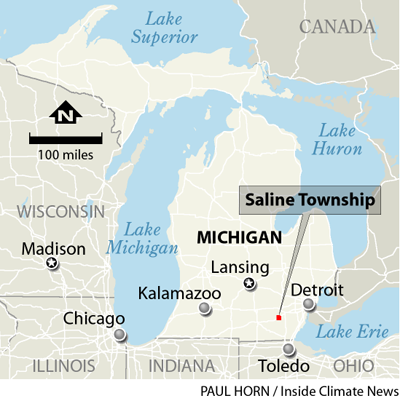
In rural communities as close to Saline as nearby Howell Township—where the township’s board similarly voted against rezoning a tract of land for data center development—and as far away as Texas, community members are railing against data center projects popping up in their backyards.
Data Center Watch, a research firm that tracks opposition to data center projects, estimates that $64 billion worth of data center projects have been blocked or delayed due to community opposition as of March 2025, and that number is still growing.
Last month, this fight reached Congress. U.S. Reps. Jim Costa, D-Calif., and Blake Moore, R-Utah, introduced H.R.5227, or the “Unleashing Low-Cost Rural AI Act,” which would require the federal departments of Energy, Interior and Agriculture to collaborate on a study of how data centers are impacting rural America.
“My legislation ensures we take a hard look at how this growth impacts rural communities that are powering the AI industry, and make sure families aren’t left paying the price,” Costa said in a statement. “But at the same time, it’s important that rural communities are not left behind in the new opportunities that AI data centers will provide for agricultural sciences and an improved ability to compete in this modern era.”
The concern, for many experts, is that communities may end up with depleted resources or surging energy costs that aren’t proportional to the benefit the data center brings to the area. Because rural communities often lack a robust local staff equipped to fully analyze data centers’ long-term impacts, these adverse outcomes are common, said Tim Cywinski, communications director of the Sierra Club’s chapter in Virginia, where 35 percent of all hyperscale data centers globally are located, mostly in rural counties within the state. He considers the extension of data center development into rural areas “a justice issue” with outsized impacts on communities’ quality of life.
Read More
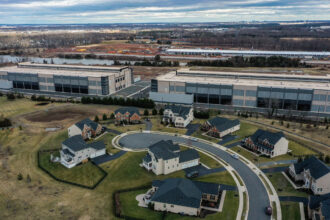
How Did This State Become the Data Center Capital of the World?
By Dan Gearino, Charles Paullin
“It’s kind of a bait and switch for people who bought into the peaceful, rural lifestyle,” Cywinski said. “Then, next thing you know, they’re going to build giant AI data centers … right by their homes.”
One of the difficulties for local leaders and community members analyzing data centers’ impacts is that—like any large-scale industrial activity—data centers vary significantly from project to project. Currently, there are few “standard answers” about how a data center will impact the community around it, said Sarah Mills, director of the Center for EmPowering Communities at the University of Michigan, which helps communities plan for energy development.
Mills said the lack of standardization is why it’s so helpful to take a proactive approach, reevaluating land uses and deciding what the community can handle before large projects come to town.
“I think this [shift] is an invitation, an opportunity for rural communities to really assess what it is that they care about and want to be in the future,” she said.
In Saline Township, this assessment happened at a breakneck pace, as residents filed into jam-packed town hall meetings, determined to ask the right questions about the lawsuit and the project’s long-term impacts even as the township’s decision-making met new pressure. The township’s lawyers were advised the complaint would be amended to include a claim for the landowners in the lawsuit’s monetary damages if a settlement was not reached.
This story is funded by readers like you.
Our nonprofit newsroom provides award-winning climate coverage free of charge and advertising. We rely on donations from readers like you to keep going. Please donate now to support our work.
Donate NowThe complaint rested on the claim that not having any plots of land zoned to allow data centers constitutes exclusionary zoning.
Laws prohibiting exclusionary zoning started appearing in the early 1900s, aiming to combat zoning practices that kept lower-income or minority populations out of wealthier areas. These practices often prevented affordable housing development, keeping costs high and reinforcing segregation.
In Michigan, however, zoning can also be considered exclusionary if a zoning classification—such as one allowing for certain types of industrial buildings—exists in a given township, but no land is actually designated for that use. Related Digital argues this reinterpretation of exclusionary zoning applies to Saline Township.
“Although the Township has a rezoning classification that would permit such a [data center] development (the ‘I-1’ zoning), it is mere window dressing,” Related Digital’s attorneys wrote in the complaint, noting that no property is currently zoned for I-1 uses, and the township’s future land use map doesn’t identify any properties they plan to rezone.
In hopes of assuaging residents’ concerns and urging them to accept the rezoning, Related Digital was on the ground in Saline Township, meeting with residents and clarifying misconceptions about the project’s water use and noise.
“The biggest misunderstanding, frankly, is that people have heard about other data center projects, many of which have hundreds of generators,” said Related Digital’s Ravitz. “That’s not the case with this project.”
Despite being large enough to accommodate an unnamed “large American publicly-traded technology company” as a client, the data center will not rely on noisy generators and will use an air-cooling system to limit water use, Ravitz explained. In fact, the only water used on-site, she said, will be for employee restrooms and fire suppression tanks outside, which the local fire department will also have access to for other fires within the township.
Beyond these conditions, the settlement also ensures the project will be developed on only 250 acres of the property; will preserve remaining acreage as undeveloped or agricultural lands; will never be sold to a tax-exempt entity; and, if decommissioned, the developer will restore the lands as a natural area. While the facility is in use, the company will also annually contribute at least $1.6 million to the township and $8 million to local schools and will make one-time donations of $14 million to the township’s fire services, farmland preservation trust, and community investment fund.
With these concessions in place, the company hopes to break ground on the data center as early as next year, with the goal of having it up and running as early as 2027. Some residents, meanwhile, are still reeling from the quick end to the dispute.
“I think the data center pushed us too fast,” Marion said.
Correction: This story was updated Oct. 27, 2025, to correct Sarah Mills’ title at the University of Michigan. The story was also revised to clarify that a claim for monetary damages that plaintiffs planned to add to their complaint was for landowners, not the company developing the data center.
About This Story
Perhaps you noticed: This story, like all the news we publish, is free to read. That’s because Inside Climate News is a 501c3 nonprofit organization. We do not charge a subscription fee, lock our news behind a paywall, or clutter our website with ads. We make our news on climate and the environment freely available to you and anyone who wants it.
That’s not all. We also share our news for free with scores of other media organizations around the country. Many of them can’t afford to do environmental journalism of their own. We’ve built bureaus from coast to coast to report local stories, collaborate with local newsrooms and co-publish articles so that this vital work is shared as widely as possible.
Two of us launched ICN in 2007. Six years later we earned a Pulitzer Prize for National Reporting, and now we run the oldest and largest dedicated climate newsroom in the nation. We tell the story in all its complexity. We hold polluters accountable. We expose environmental injustice. We debunk misinformation. We scrutinize solutions and inspire action.
Donations from readers like you fund every aspect of what we do. If you don’t already, will you support our ongoing work, our reporting on the biggest crisis facing our planet, and help us reach even more readers in more places?
Please take a moment to make a tax-deductible donation. Every one of them makes a difference.
Thank you,








